Scripture Text: Psalm 19
When we think about this doctrine which is so important to all Christians of all times and places and theologies, we (with good reason) immediately think of famous verses like Genesis 1:1: “In the beginning, God created the heavens and the earth.” Yet, scripture speaks about God as creator in other places and in other ways, and these passages which are at times left out of the discussion of God as creator have something important to tell us. Psalm 19 is one such passage. The book of Psalms is a prayer book for the people of God. It is a collection of liturgical prayers inspired by The Holy Spirit, and given to us to show us how to pray and to give us words to pray when we lack words. In Psalm 19, the psalmist speaks to the glory of God revealed in creation.
Today, we continue our sermon series looking at what Scripture teaching regarding the doctrines expressed in the Apostles’ Creed. Having looked at the doctrine of the Trinity, which is expressed in the way the creed is structured, we come to the first line: “I believe in God the Father almighty, Creator of heaven and earth.” (1) Faith in God as creator, belief that God is the creator of all things, is something that unites Christians of all times, all places, all denominations and theologies.
The heavens are telling the glory of God;
and the firmament proclaims his handiwork.
Day to day pours forth speech,
and night to night declares knowledge.0
There is no speech, nor are there words;
their voice is not heard;
yet their voice] goes out through all the earth,
and their words to the end of the world. (Psalm19:1-4 NRSV)
Creation is speaking to us, nature itself is crying out. Let’s take a moment to stop and listen.

(For more information see either the link to the National Wildlife foundation, or the Nova special below) (3)
This is the common wood frog. (2) This aptly named little frog is common all across the northeast and Alaska. If you grew up in the country, you may have chased these frogs around while playing in your backyard as a child. It seems normal; it seems mundane. But this frog is extraordinary. This frog is Captain America! Every winter this frog freezes solid! Their hearts stop beating, their lungs stop breathing, they freeze completely solid, preserved by an antifreeze-like substance in their blood. And in the spring, after spending months completely frozen, with no heartbeat, no breath in their lungs, they thaw and hop away! Creation cries out, telling the glory of God. It gets better.
To learn more about the weirdness of the physical world check out Nova: The Fabric of the Cosmos, hosted by Brian Greene (5)
Take a moment to stop and look at your own hand, or the wall next to you, or the floor that you are standing on. Whatever it is, it is not solid. It is not one solid piece. It is countless particles, crammed together, hovering next to each other. And each of those countless particles is itself a mystery wrapped in an enigma. Their properties, their behavior, how the smallest collections of particles relate to the largest collections of particles, are mysteries that scientists are trying to unlock. They are realities that defy “common sense” and stretch the limits of human comprehension. Every moment of every day, you are surrounded by, your very body is made of, some of the greatest mysteries of the universe. It gets better.
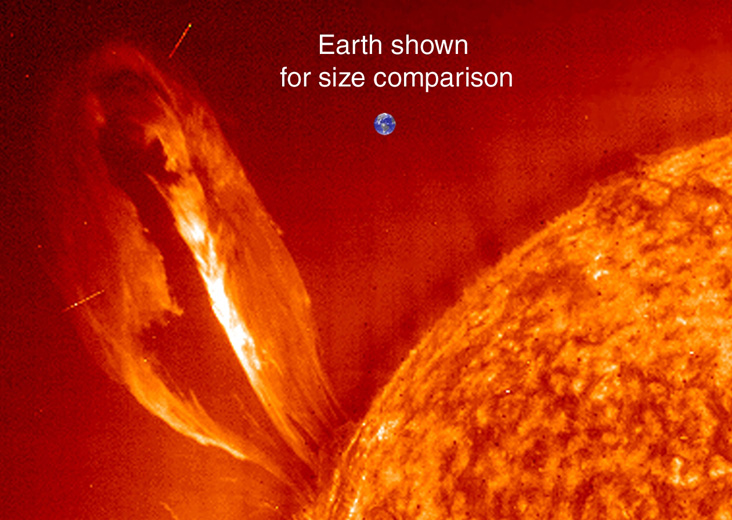
Our Sun is a giant ball of nuclear explosions with radius of 432,168.6 miles. That is a radius, not diameter, mind you, meaning that is not the width of the sun, but the distance from the center to the outside. The sun’s core is essentially a giant thermonuclear fusion reactor, where atoms are smashed together, producing an incomprehensible amount of energy. If you where to set off every nuclear missile, ever atomic bomb ever created in the history of humanity, all at once it would look like a firecracker in comparison to what the sun does every moment of every day. And, among the stars in the sky, the sun is not one of the big ones. It gets better.
To learn more about black holes and the nature of gravity and space, or check the facts referenced in this sermon, please visit: https://www.nasa.gov/audience/forstudents/k-4/stories/nasa-knows/what-is-a-black-hole-k4.html (8)
and
https://www.pitt.edu/~jdnorton/teaching/HPS_0410/chapters/general_relativity_massive/index.html (9)
At the center of our galaxy lies a super massive black hole. (8) A black hole is a point at which space is so distorted and gravity so intense that not even light can escape. It’s what happens when a star becomed so dense, and it’s gravity so strong, that it collapses in on itself. It is so powerful that it warps space enough that it causes stars incomprehensibly far away to swirl around itself. (9) It gets better.
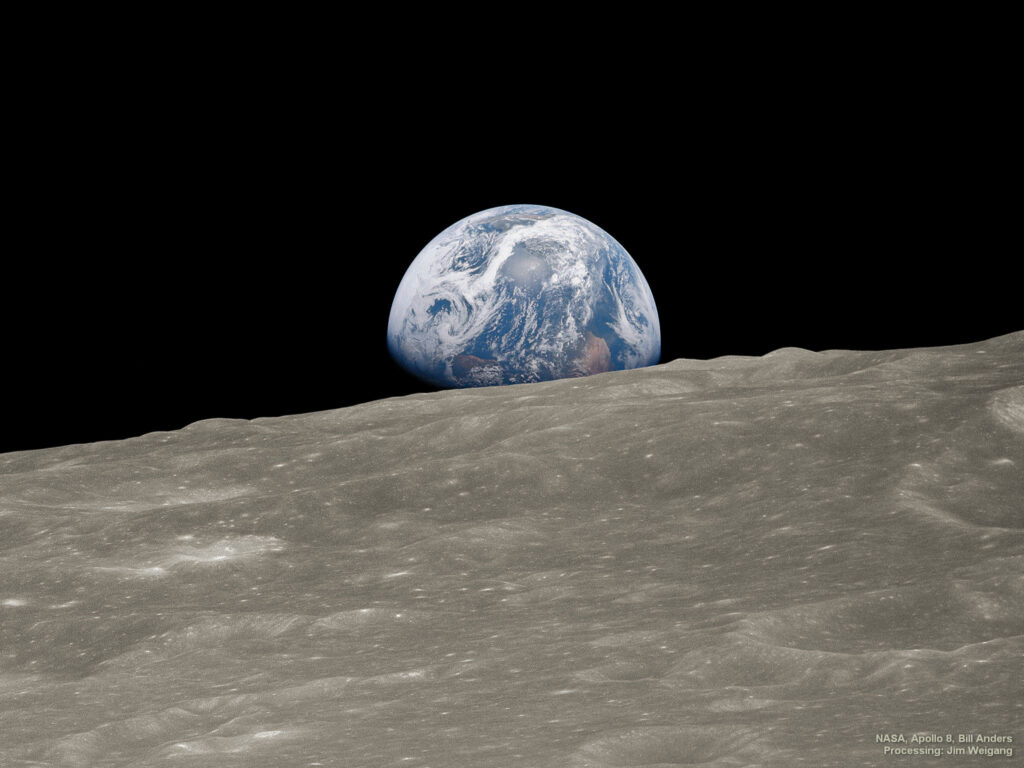
For more information about the movement of the earth, please visit: https://www.scientificamerican.com/article/how-fast-is-the-earth-mov/ (11)
This photo is called Earthrise and was taken by crew of Apollo 8. (10) That little orb we call home is moving at speeds which defy comprehension. (11) Our planet is rotating at a speed of 1,000 miles an hour. It is orbiting around the sun at a speed of 67,000 miles and hour. The sun in turn is whipping around the supermassive black hole at the center of our galaxy at a speed of 490,000 miles an hour. All the while, our galaxy itself is rocketing through the universe at a speed of 2,237,000 miles an hour. You live on a rocket ship made of stone and dirt, and dead dinosaurs, careening through the vastness of space at speeds that the human mind can scarcely comprehend. It gets better.
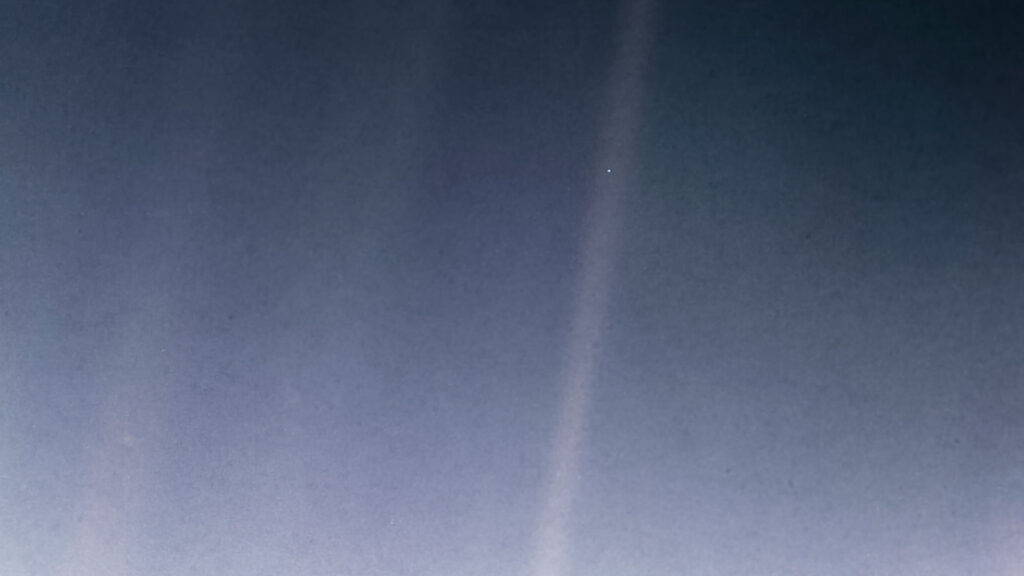
For more information about this photo, visit: https://solarsystem.nasa.gov/resources/536/voyager-1s-pale-blue-dot/ (12)
This photo, Voyager I’s Pale Blue Dot, was taken by the Voyager I spacecraft as it left our solar system and looked back one final time. (12) The earth is barely visible, nothing but speck of dust floating in the vastness of space.This image inspired the title and much of the content of Carl Sagan’s Book Pale Blue Dot. In that book, Sagan says this…
Look again at that dot. That’s here. That’s home. That’s us. On it everyone you love, everyone you know, everyone you ever heard of, every human being who ever was, lived out their lives. The aggregate of our joy and suffering, thousands of confident religions, ideologies, and economic doctrines, every hunter and forager, every hero and coward, every creator and destroyer of civilization, every king and peasant, every young couple in love, every mother and father, hopeful child, inventor and explorer, every teacher of morals, every corrupt politician, every “superstar,” every “supreme leader,” every saint and sinner in the history of our species lived there-on a mote of dust suspended in a sunbeam. (13)
Everything we’ve ever known, all the wonders of this world, every mountain, every canyon, every ocean, is there, on a little speck of dust floating in an ever expanding cosmos.
The heavens are telling the glory of God;
and the firmament proclaims his handiwork.
Day to day pours forth speech,
and night to night declares knowledge.0
There is no speech, nor are there words;
their voice is not heard;
yet their voice] goes out through all the earth,
and their words to the end of the world. (Psalm19:1-4 NRSV)
Creation cries out to us. The mountains, the stars, every blade of grass, every creature great and small, proclaims the wonder and glory of God. We are surrounded by the work of the great artist, who invented art itself. Take time to soak in the beauty. This is something which COVID-19 has not taken from us. The events may be canceled, but the parks are still open. The planetariums are closed, yet the sky itself still sings. Creation proclaims the glory of God. Will you stop and listen?
– Pastor Joshua Demi
Notes
- This line is taken from the ecumenical text of Apostles’ Creed and can be found at https://www.umc.org/en/content/apostles-creed-traditional-ecumenical
- The information about wood frogs discussed in this sermon is from the The National Wildlife Foundation and can be viewed at the following link. https://www.nwf.org/Educational-Resources/Wildlife-Guide/Amphibians/Wood-Frog
- NOVA: Frozen Frogs https://wqed.pbslearningmedia.org/resource/lsps07.sci.life.evo.frozenfrogs/frozen-frogs/
- This photo is from Encyclopedia Britannica and can be viewed at the following link. https://www.britannica.com/science/atom
- Nova: The Fabric of the Cosmos https://www.pbs.org/wgbh/nova/series/the-fabric-of-the-cosmos/episodes/
- The information about the sun referenced in this sermon os from: NASA Science: Solar System Exploration – Our Sun https://solarsystem.nasa.gov/solar-system/sun/in-depth/
- Image credit: NASA Science: Solar System Exploration – The Milky Way: https://solarsystem.nasa.gov/resources/285/the-milky-way-galaxy/
- The information regarding black holes referenced this sermon is from Black Holes: NASA What is a Black Hole: https://www.nasa.gov/audience/forstudents/k-4/stories/nasa-knows/what-is-a-black-hole-k4.html
- The information regarding gravity and space referenced in this sermon is from John D. Norton Gravity Near a Massive Body University of Pittsburgh. https://www.pitt.edu/~jdnorton/teaching/HPS_0410/chapters/general_relativity_massive/index.html
- NASA Earthrise. https://www.nasa.gov/multimedia/imagegallery/image_feature_1249.html
- The information regarding the motion of the earth is from How Fast is the Earth Moving: Rhett Herman, a physics professor at Radford University in Virginia, supplies the following answer. Scientific American. https://www.scientificamerican.com/article/how-fast-is-the-earth-mov/
- Voyager I’s Pale Blue Dot. https://solarsystem.nasa.gov/resources/536/voyager-1s-pale-blue-dot/
- Carl Sagan, Pale Blue Dot: A Vision of the Human Future in Space. Quote via Goodreads. https://www.goodreads.com/work/quotes/1816628-pale-blue-dot-a-vision-of-the-human-future-in-space
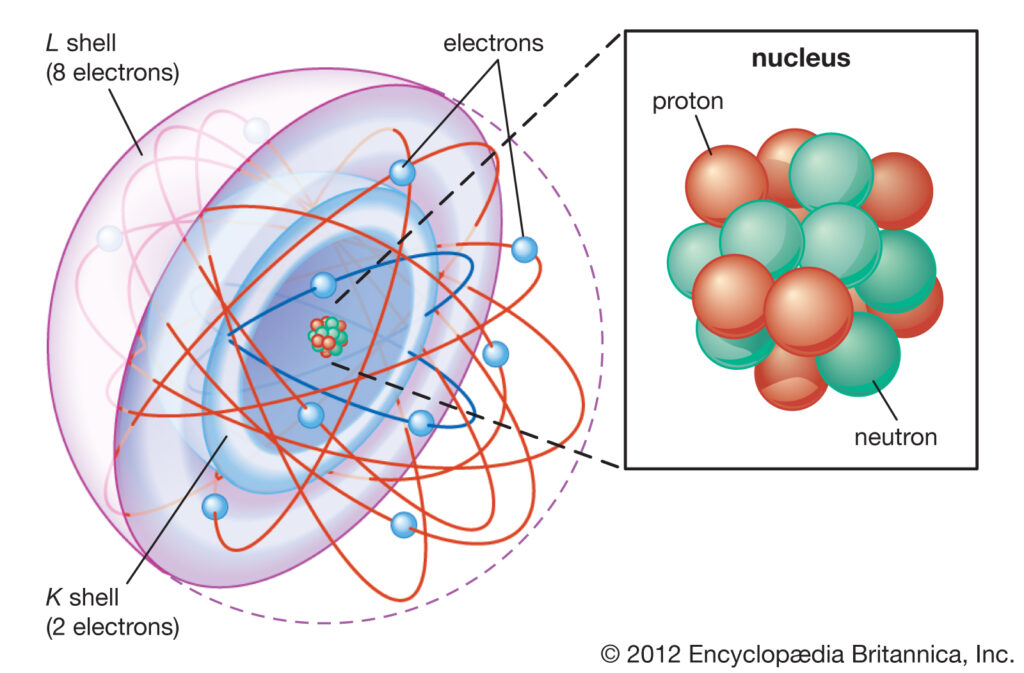
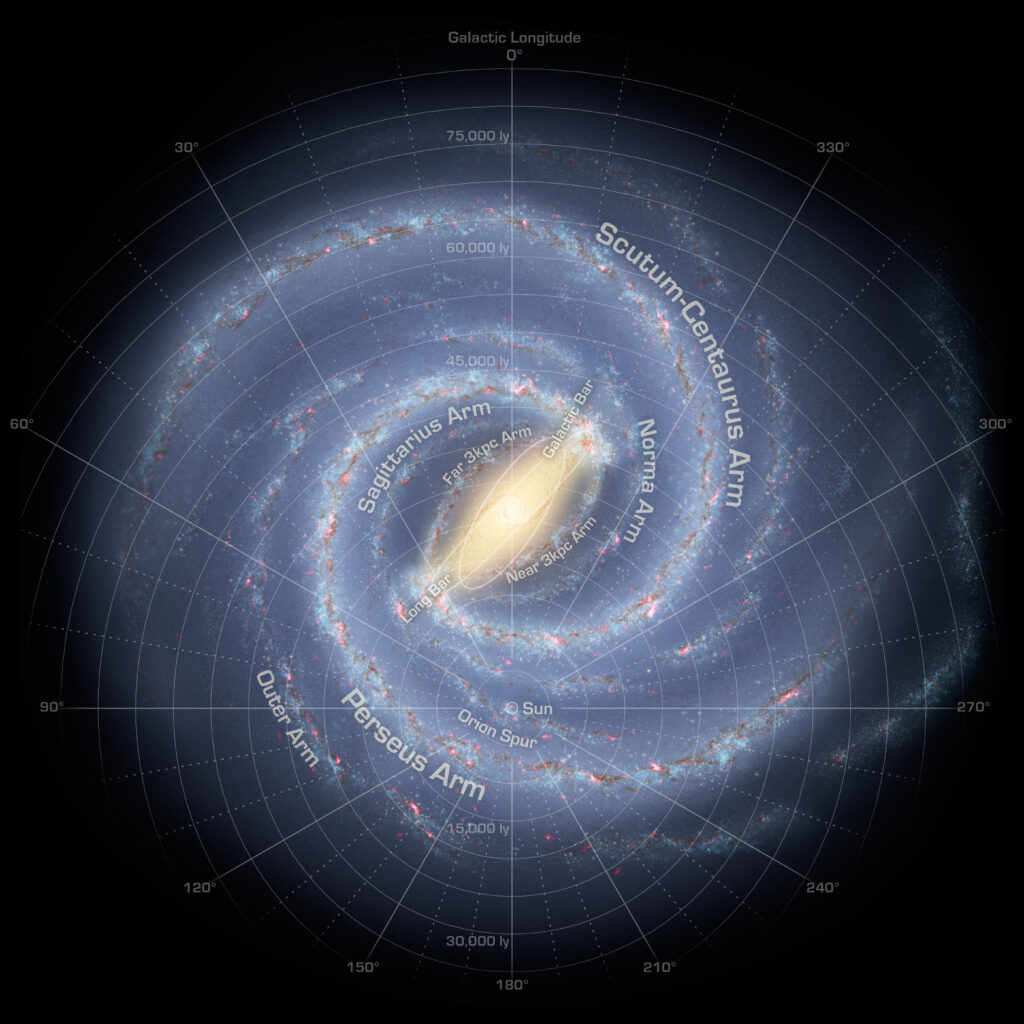
0 Comments